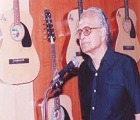Main Feature

Dipping In To The Archives - The Day Of The Nautch & The Nautchwali
The one word, the name, by which Indian dance as we know today was known universally right into the first quarter of this century was nautch. Bharata Natyam, Odissi, ballet and the rest are all labels that have gained currency only during the past 60 years or so. Before that, all Indian dancing, especially in the eyes of the West, was just plain nautch. The word, however, implies more than mere dancing, for it connotes a whole atmosphere. That setting now belongs to the realm of nostalgia; so does the nautch. But at this time of the year every year, with Durga Pooja celebrations of Bengal round the corner, reminders of that setting, that atmosphere, come alive with a gush that compels retelling.
Special Feature

Towards A Better Understanding Of Carnatic Music
Art music is usually presented in a concert. It requires that the performer should present music as music, not as anything else, for example, not as prayer, even though he may start with a supplication to god. The concert may consist of compositions in which divinity is praised, but that does not make it devotional music or Divine music. Considering that Indian music is raga music and art music is presented in a concert, the objective of the performer in a concert should be to explore the raga-s he chooses to present. The kriti, or even a song which does not have the structural or other dimensions of a kriti, is, in this context, first and foremost a vehicle for raga exploration or imaging.


